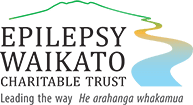
Meet Kieran. Kieran has epilepsy and is also a keen soccer player. He has written two poems to share with you all. Thank you Kieran. Epilepsy is not that bad, It will not make you sad, Do not think of this thing as hate, Treat it like it’s your best mate. Epilepsy is quite cool, It will make you not a fool, Do not go
Read More »